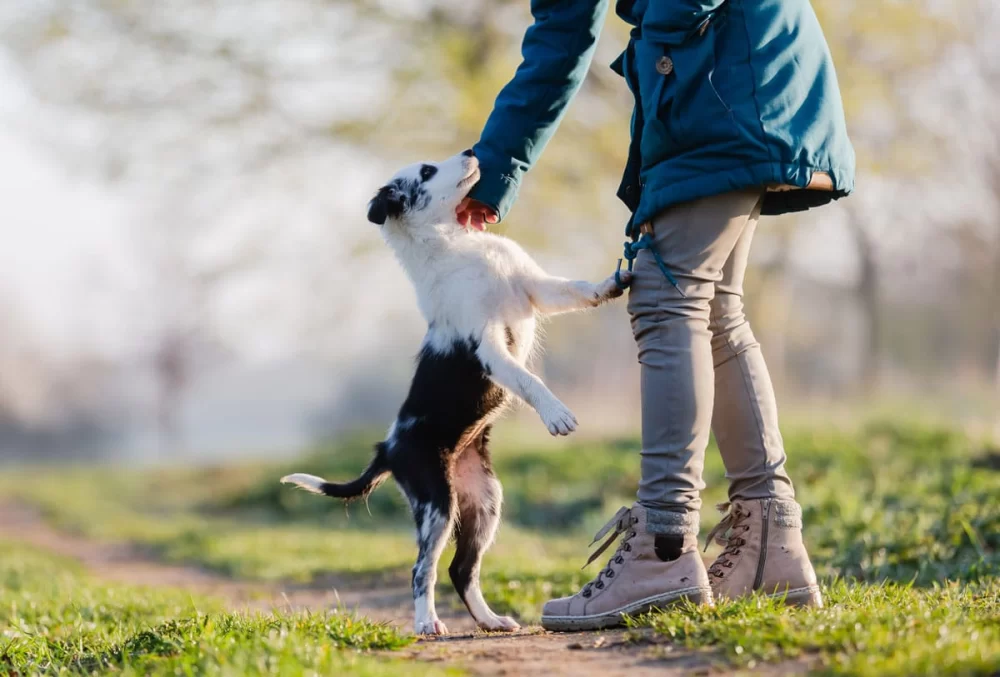- Understanding Dog Jumping Behavior and Its Causes
- Effective Training Methods to Stop a Dog from Jumping
- Real-Life Examples of Training Success Against Jumping
- Professional Tips and Where to Find Help
Understanding Dog Jumping Behavior and Its Causes
Jumping is a natural behavior for many dogs, often driven by excitement, a desire for attention, or even learned habits. While a friendly greeting or playful leap might seem harmless, uncontrolled jumping can become a problematic behavior for owners, especially when the dog is large or overly enthusiastic.
To effectively train a dog to stop jumping, it’s important to first understand why your dog exhibits this behavior. Puppies, for instance, often jump as a way to engage with their owners or explore their environment. Adult dogs might jump due to anxiety, overstimulation, or simply because jumping has been inadvertently rewarded in the past.

1946 S Christopher Columbus Blvd, Philadelphia, PA 19148, USA
See DetailsWhy Dogs Jump: The Psychology Behind It
Jumping can be a form of communication, a way for dogs to express excitement or demand attention. Some dogs also jump because they lack proper training or do not know alternative ways to greet people. Recognizing these underlying causes helps tailor an effective training plan.
Effective Training Methods to Stop a Dog from Jumping
Training a dog to stop jumping requires consistent, patient effort and clear communication. Here is a detailed approach to help owners manage and eliminate this behavior.
1. Consistent Use of Commands and Body Language
Choose a clear verbal cue such as “off” or “no jump” and consistently use it whenever the dog attempts to jump. Combine this with calm but firm body language—turning away from the dog or crossing your arms—to signal that jumping will not get attention.
2. Reward Calm Behavior
Positive reinforcement is key. When your dog approaches calmly without jumping, immediately offer praise, treats, or affection. This helps the dog associate calm greetings with positive outcomes, reinforcing good manners.
3. Teach Alternative Behaviors
Redirect the dog’s energy by teaching them to sit or stay when greeting people. This not only prevents jumping but also establishes impulse control. Practice this regularly in varied situations to build reliability.
4. Manage the Environment
Control situations where jumping usually occurs. For example, use a leash or baby gate to limit access during visits or entrances, gradually increasing freedom as the dog learns appropriate greeting behaviors.
5. Avoid Mixed Messages
Everyone interacting with your dog must follow the same rules. Allowing some people to reward jumping while others discourage it confuses the dog and delays progress.
Real-Life Examples of Training Success Against Jumping
Take Max, a lively Labrador Retriever who used to jump on every visitor. His owner implemented a routine of turning away and ignoring Max each time he jumped, followed by rewarding calm sitting. Over a few weeks, Max learned that jumping cut off social interaction, while sitting invited attention. This transformation not only improved Max’s manners but also made visits more enjoyable for everyone.
Another example is Bella, a puppy who was naturally excitable and loved jumping. Her training involved consistent commands, redirection to “sit,” and use of interactive toys to channel energy. Bella’s owner credits patience and clear boundaries for successfully stopping the jumping habit within two months.
Insights From These Stories
Both cases highlight the importance of consistency and positive reinforcement. They also demonstrate how understanding a dog’s motivation for jumping can guide effective, personalized training methods.
Professional Tips and Where to Find Help
Sometimes, despite best efforts, jumping behavior may persist or stem from anxiety or other underlying issues. Consulting with professional trainers or veterinarians can provide valuable insights and tailored solutions.
Hidden Brook Veterinary offers expert advice and products suited for behavior modification, including calming aids and training tools that can support owners in this journey. Their team can recommend the most suitable options, ensuring your dog’s training is safe and effective.
Professional guidance can also help create a structured training plan that fits your lifestyle and your dog’s unique personality, improving the chances of long-term success.
The Value of Expert Support
Training a dog to stop jumping is not only about discipline but also about understanding and communication. Professional support empowers owners with knowledge and resources to address behavior challenges confidently and compassionately.










